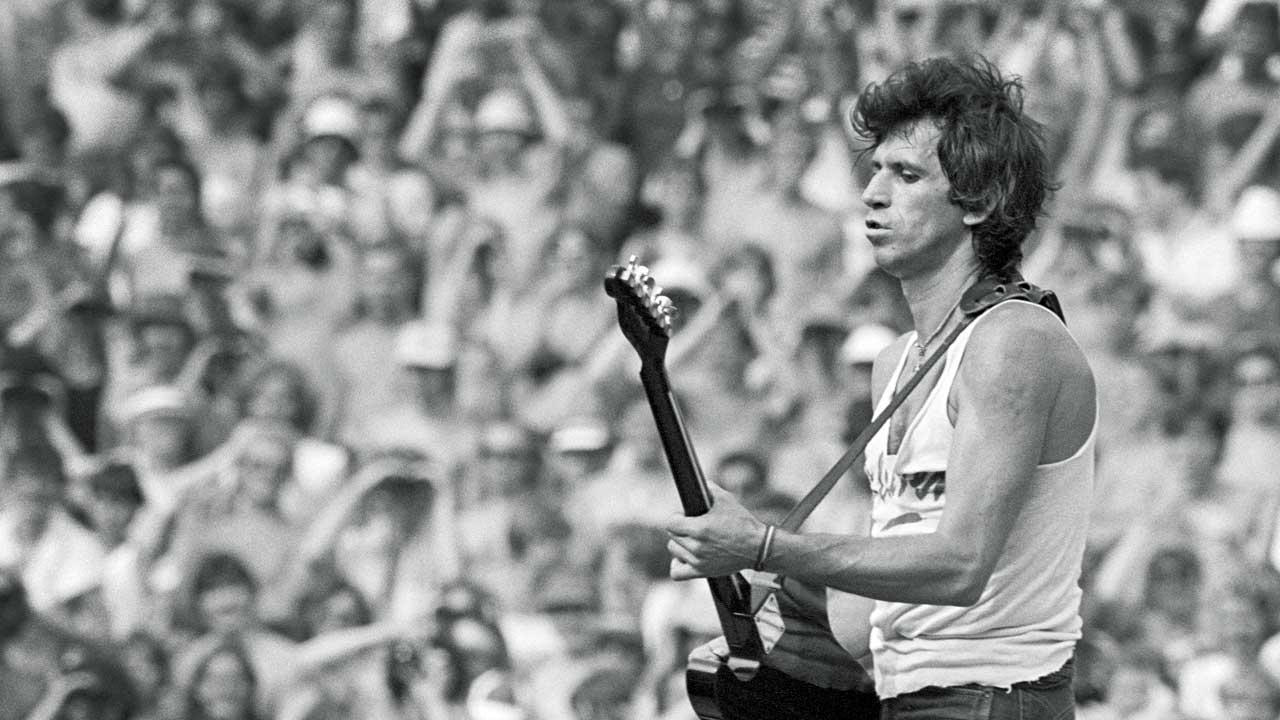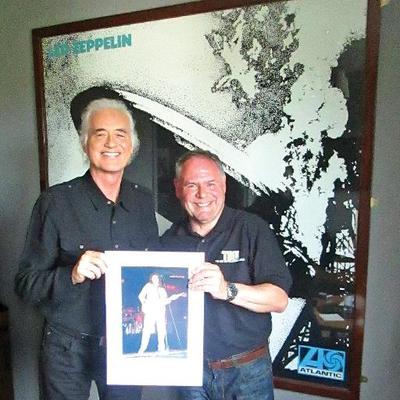The 10 best Keith Richards riffs
The 10 best riffs from the legendary Human Riff himself, Rolling Stones guitarist Keith Richards

There’s no finer sight in rock than Keith Richards on stage, Telecaster low slung, legs apart, wielding his power and influence over The Rolling Stones.
It’s a sight that's thrilled countless millions over six decades. At the centre of it all is the riffs – riffs that have defined the Stones sound since they burst on the scene in the early 1960s.
From funk/soul licks to full-on power chords, Keith has constantly lived up to his legacy, delivering classic after classic across the Stones catalogue. Here are ten of the best examples of why Keith Richards remains the original "human riff’".

The Last Time (1965)
This UK number one single issued in early 1965 heralded a golden age of Stones 45s – it was also the first Jagger/Richard penned A side. It’s driven by an incessant Keith-composed riff (played by Brian Jones) that never lets up. When coupled with the repeated line of the title, it carries a hypnotic quality all of its own.
(I Can’t Ge No) Satisfaction (1965)
The almost horn-sounding riff came courtesy of a newly arrived fuzz tone pedal. It rings loud and clear throughout this anthemic single of pent-up angst. Keith revealed that he woke up in the middle of the night with this riff sequence and quickly got it down on tape. It was then developed at a session at RCA’s Hollywood Studios. The Stax-influenced soulful edge to the riff lent itself perfectly to an impressive cover version by Otis Redding.
Jumpin’ Jack Flash (1968)
After dabbling in psychedelia with Their Satanic Majesties Request, the Stones got back to doing what they do best – namely roughshod rock’n’roll. It’s an archetypal Keith riff that stamps its authority from the off. Jumpin’ Jack Flash It was adopted as a suitably incendiary set open on their 1969 comeback US tour – as can be seen in this clip filmed at Madison Square Garden. Incidentally, the phrase Jumpin’ Jack was derived from a comment Keith made about his gardener at the time Jack Dyer.
Honky Tonk Women (1969)
Their first single after the departure from the group and sad demise of Brian Jones, this summer of ‘69 worldwide smash is graced with one of the all-time great intros. From Charlie Watts' measured back beat through Keith’s slow burn chords to that gorgeous revolving riff lick, this is a masterclass of Stones musical economy – nothing is over played or out of place. As a bonus, Keith sings his heart out as he shares the chorus with Mick.
Sign up below to get the latest from Classic Rock, plus exclusive special offers, direct to your inbox!
Brown Sugar (1971 single)
From the two note intro through to the outgoing solo and ‘’whoo whoo yeah’’ vocal refrain, this is a stonewall Stones classic and another career high. Note the subtle deployment of an acoustic guitar behind the main riff. The lyrical theme might now be frowned upon, but back in 1971 it did not prevent this first single on their own label from racking up massive sales and airplay. As the opening track on Sticky Fingers it also set the bar sky high for one of their finest albums.
Can’t You Hear Me Knocking (1971)
Keith kicks this lengthy Sticky Fingers opus into gear via a stuttering riff in the now familiar open G tuning. From there, he underpins Jagger’s vocals at every twist. Eventually it all drifts off into a golden sunset via a spontaneous jam as Keith hands over the spotlight to saxophonist Bobby Keys and fellow guitarist Mick Taylor – the latter delivering a Santana like solo of immense quality.
All Down The Line (1972)
Exile On Main Street was a total triumph for Keith and ,alongside his vocal showcase Happy, this track is one of the highlights. Led by yet another nagging riff and undercut by Mick Taylor’s soaring slide work, the brass interjections further emphasis the sheer power of the riff.
Dancing With Mr D (1973)
The staggered lurch of the riff and the way Mick breathes and sighs his way through the slightly satanic lyrics light up another successful Glimmer Twins production – oh, and, "Charlie’s good tonight, inee?"
Hey Negrita (1976)
Following the departure of Mick Taylor, Ronnie Wood was always the obvious fit for the Stones and a perfect partner in crime for Keith. On Black And Blue's side two opener the pair cook up a veritable funk storm with a nod to the likes of The Meters and the sound of New Orleans.
Start Me Up (1981)
This infectious rocker recorded during the 1977/78 Some Girls sessions began life in a reggae style. It was then rejuvenated by another classic Keith riff. At the time Keith felt it was a bit too close to Brown Sugar and it was subsequently left in the can. Three years later it took engineer Chris Kimsey to show Keith the error of his ways as he searched for material for the 1981 Tattoo You Album. The end result? An opening riff of fierce intent and yet another classic Keith driven Stones performance.
Dave Lewis is a freelance journalist and the editor and publisher of the Led Zeppelin magazine and website Tight But Loose, and author of several books on the band. Through the magazine and books, the Tight But Loose website and his Facebook page, Dave's objective remains to continue to inform, entertain and connect like minded Led Zeppelin fans new and old throughout the world – bringing them closer to the greatest rock music ever made.

